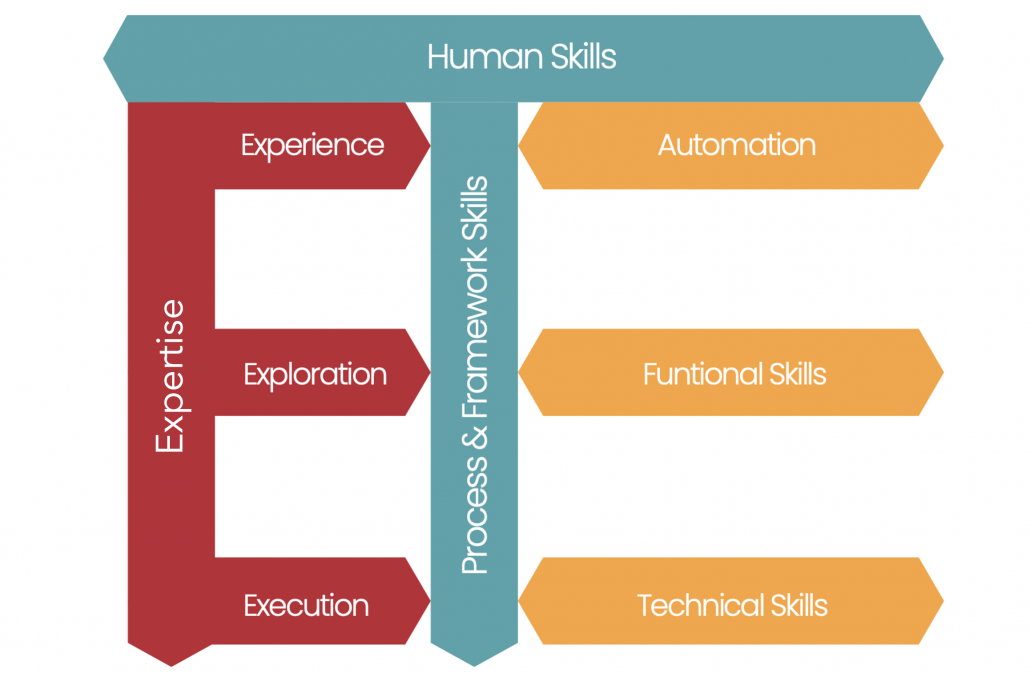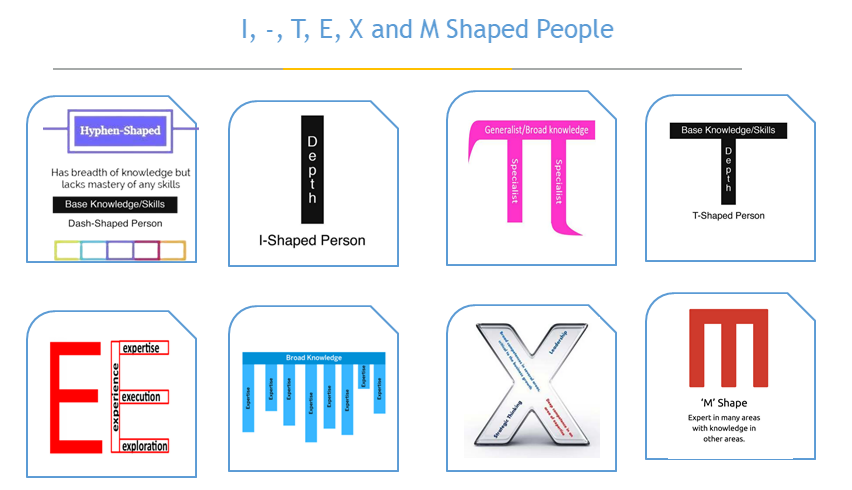I, -, T, E, X, EX and M Shaped People
I, -, T, E, X, EX and M Shaped People
Dr. Abdulrahman ALJAMOUSS
Which Letter-shaped employee you are?
Biologically, people are very similar, and at the same time they are very different because of their personalities. Have you ever heard the old saying, “Jack of all trades, and master of none”? It has a catchy ring—but that doesn’t necessarily mean it’s true in all cases.

Employees are divided into groups. The two basic groups that you are most probably familiar with are Specialists and Generalists. Apart from these, there are other groups of employees who are classified in letter-shaped groups.
There are a number of letter- or symbol-based metaphors, sort of an alphabet soup of metaphors, that describe the type of person you might find in a team. In this article I have tried to explain few of them.
Hyphen/dash (-)-shaped

They have a breadth of experience, but little depth usually called generalists. Since they do not possess deep competence in one area, they are not respected by Specialists or other people.
As a result, they are not supported. E.g. In baseball, a generalist would be a utility player; highly valued because they fill in many positions, but not a starter.
I-shaped
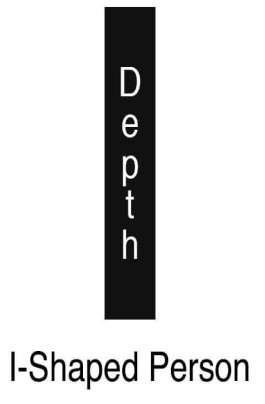
- I-shaped people are specialists. Specialists have a single specialty or focus.
- They do not know much about different disciplines, and they prefer to work in one single job type.
- That is why they are depicted with the letter "I" which represents their deep knowledge and experience in one area.
- While deep experience is important, in order to collaborate, the disciplines of design and engineering work best when there is breadth.
- I-shaped people can succeed in many environments, but typically not in professions requiring intensive cross-collaboration.
- g. DBA, MS CRM expert, Adobe Campaign expert.
T-shaped
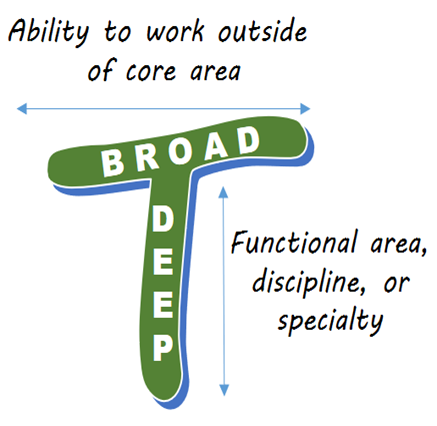
- T-shaped people are employees with broad experience in different disciplines that is illustrated by the horizontal bar of “T”, and they have a deep expertise in their field or discipline which is represented by the “T’s” vertical bar.
- T-shaped people represent the classic agile team member.
- T-shape people have a specialty, and in addition, they have a wider breadth of experience with other skills.
- T-shape people have a focus but can fill in when bottlenecks are recognized. The positive outcomes will be greater interconnectivity among departments, open and better communication, strong shared vision of business goals, collaboration and creative innovation
π / Pi-shaped
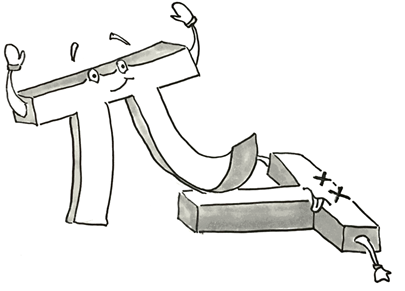
- Breadth is combined with not one but two separate domains of deep expertise, creating a shape similar to the symbol for Pi (combining T and M-shaped people).
- The Pi shape is unique and makes an excellent metaphor for team members that are truly adaptive.
- Marketers and technical architects are few example of Pi shaped employees.
M-shaped
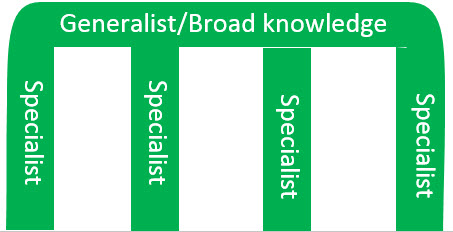
- Two vertical Bars represents, people having multiple expertise in their fields or discipline.
- A person with more than one specialty can be applied more flexibly than someone with single specialty.
- M-shaped are equal or more knowledgeable in the skills expected of a T-shaped.
- M-shaped employees are actually members of high performance cross-functional teams.
Comb-shaped

- Comb shaped employee have multiple areas of expertise areas which gives the shape of a comb and a broad top or base for collaboration.
- These multiple expertise areas are never deep enough as the knowledge of a deep specialist in only one area.
- However in an increasingly complex, interconnected and interdependent world, if we have sufficient depth in several – or even many – domains, we can often be more valuable than a specialist.
E-shaped

- E-shaped is a concept similar to T-shaped where employees have depth and breadth and even more.
- Expertise in few areas, Experience across several areas, specialist with proven execution skills and explorative minds combined to formed E shaped employee. However, a lot of emphases is placed on the E: execution.
- E-shaped people translate ideas into reality.
- Employees and teams who are willing to explore in order to satisfy their curiosity, and who will be taking the risks to execute new ideas and innovate, will be highly in demand in near future.
X-shaped
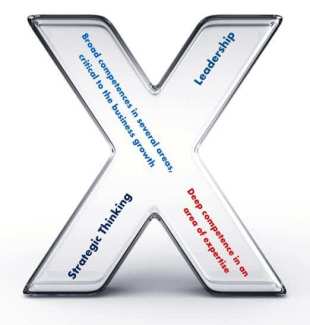
- X shaped employees has a deep expertise built on solid credibility but can also lead diverse teams to accomplish a goal.
- These employees may work less on their original expertise as they evolve into management and leadership positions and begin to deal more with strategy and people.
- Usually these people tend to be focused on strategy and team management, rather than the coalface design work, plus the ability to lead a diverse team to achieve a common goal.
- Here, to some extent, the depth of their skill set is less important than their emotional intelligence, and their leadership qualities.
Remember: A 'Mile Deep, Inch Wide' Approach Isn’t Always Best

What type of human resource is required?
